Pfaff Creative 4.5 User Manual
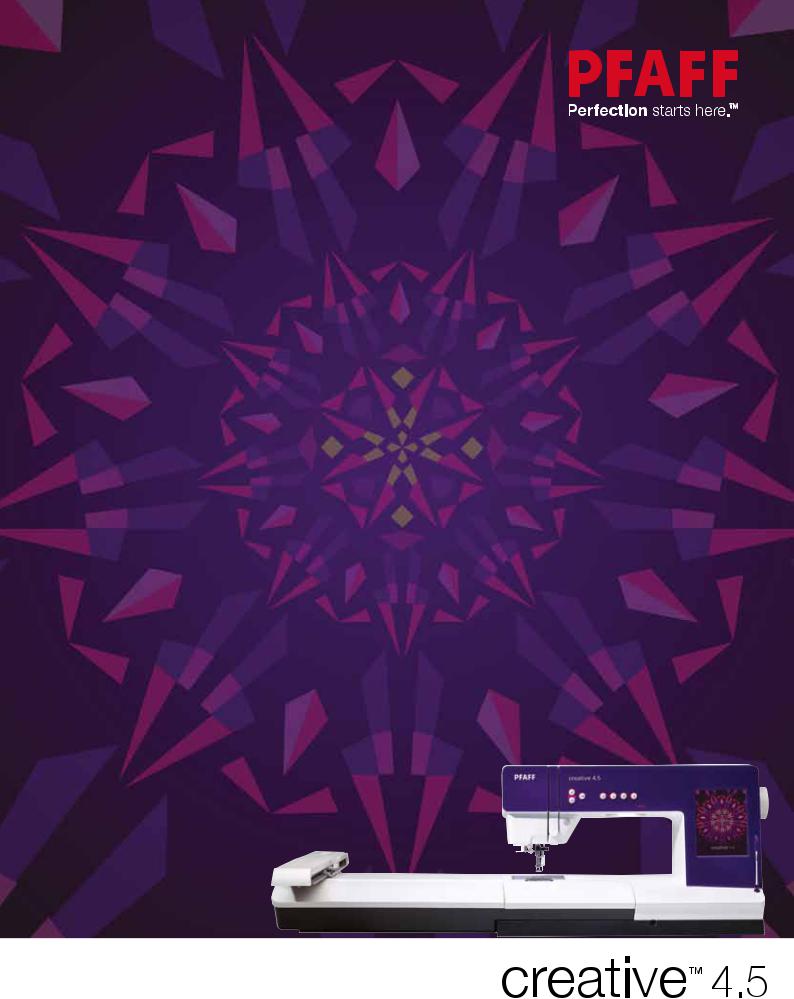
Owner’s Manual
This household sewing machine is designed to comply with IEC/EN 60335-2-28 and UL1594.
IMPORTANT SAFETY INSTRUCTIONS
When using an electrical appliance, basic safety precautions should always be followed, including the following:
Read all instructions before using this household sewing machine. Keep the instructions at a suitable place close to the machine. Make sure to hand them over if the machine is given to a third party.
DANGER – To reduce the risk of electric shock:
•A sewing machine should never be left unattended when plugged in. Always unplug this sewing machine from the electric outlet immediately after using and before cleaning, removing covers, relamping, lubricating or when making any other user servicing adjustments mentioned in the instruction manual.
WARNING – To reduce the risk of burns, fire, electric shock, or injury to person:
•This sewing machine is not intended for use by persons (including children) with reduced physical, sensory or mental capabilities, or lack of experience and knowledge, unless they have been given supervision or instruction concerning use of the sewing machine by a person responsible for their safety.
•Children should be supervised to ensure that they do not play with the sewing machine.
•Use this sewing machine only for its intended use as described in this manual. Use only attachments recommended by the manufacturer as contained in this manual.
•Never operate this sewing machine if it has a damaged cord or plug, if it is not working properly, if it has been dropped or damaged, or dropped into water. Return the sewing machine to the nearest authorized dealer or service center for examination, repair, electrical or mechanical adjustment.
•Never operate the sewing machine with any air openings blocked. Keep ventilation openings of the sewing machine and foot control free from the accumulation of lint, dust, and loose cloth.
•Keep fingers away from all moving parts. Special care is required around the sewing machine needle.
•Always use the proper needle plate. The wrong plate can cause the needle to break.
•Do not use bent needles.
•Do not pull or push fabric while stitching. It may deflect the needle causing it to break.
•Wear safety glasses.
•Switch the sewing machine off (“0”) when making any adjustment in the needle area, such as threading needle, changing needle, threading bobbin, or changing presser foot, etc.
•Never drop or insert any object into any opening.
•Do not use outdoors.
•Do not operate where aerosol (spray) products are being used or where oxygen is being administrated.
•To disconnect, turn all controls to the off (“0”) position, then remove plug from outlet.
•Do not unplug by pulling on cord. To unplug, grasp the plug, not the cord.
•The noise level under normal operating conditions is less than 75dB(A).
•The foot control is used to operate the machine. Avoid placing other objects on the foot control.
•This sewing machine is provided with double insulation. Use only identical replacement parts. See instructions for Servicing of Double-Insulated Appliances.
SAVE THESE INSTRUCTIONS
SERVICING OF DOUBLE INSULATED PRODUCTS
In a double-insulated product, two systems of insulation are provided instead of grounding. No ground means is provided on a double-insulated product, nor should a means for grounding be added to the product. Servicing of a double-insulated product requires extreme care and knowledge of the system and should be done only by qualified service personnel. Replacement parts for a double-insulated product must be identical to those parts in the product. A double-
insulated product is marked with the words ‘DOUBLE INSULATION’ or ‘DOUBLE INSULATED’.
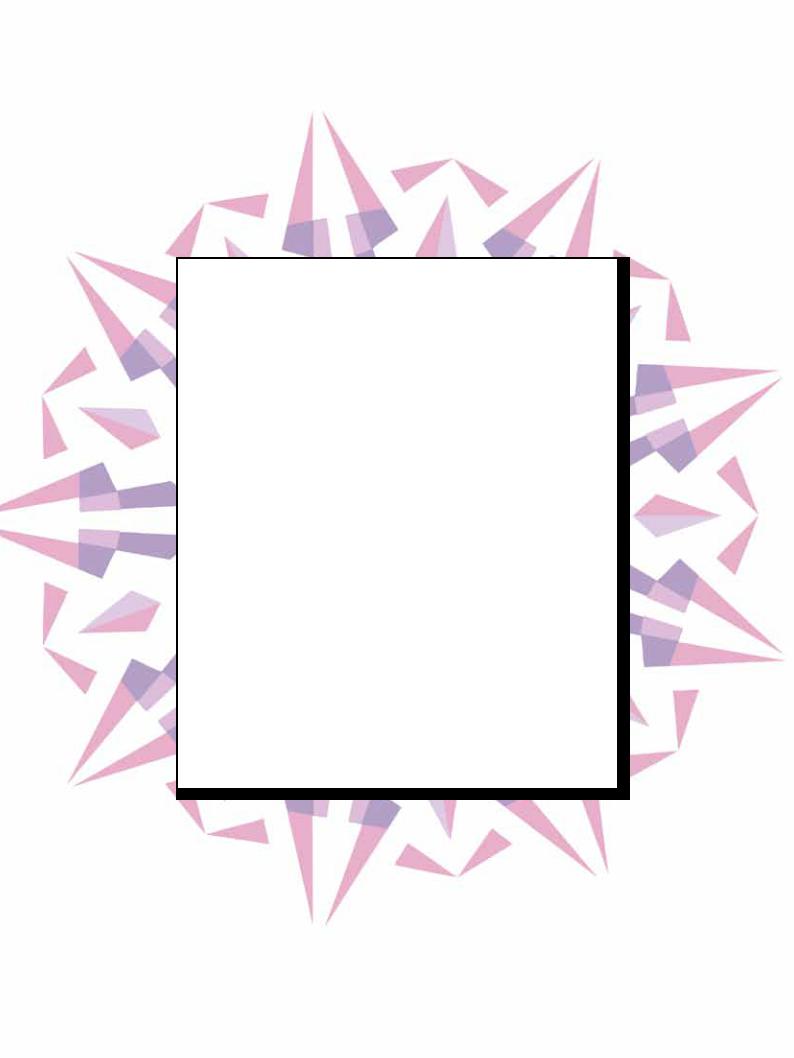
Congratulations!
Congratulations on purchasing your new PFAFF® creative™ 4.5 sewing and embroidery machine.
As a sewing enthusiast, you have acquired one of the most advanced and comprehensive sewing and embroidery machines in the world; it will enable you to transform all your creative ideas into reality using the most highly tuned technology and features.
Before you start, please spend some time reading this owner’s manual. You will soon discover how to maximize the use of your machine. Our authorized PFAFF® dealers will of course also be pleased to advise you at any time.
Your PFAFF® creative™ 4.5 sewing and embroidery machine will definitely enable you to experience a totally new dimension of sewing and embroidery.
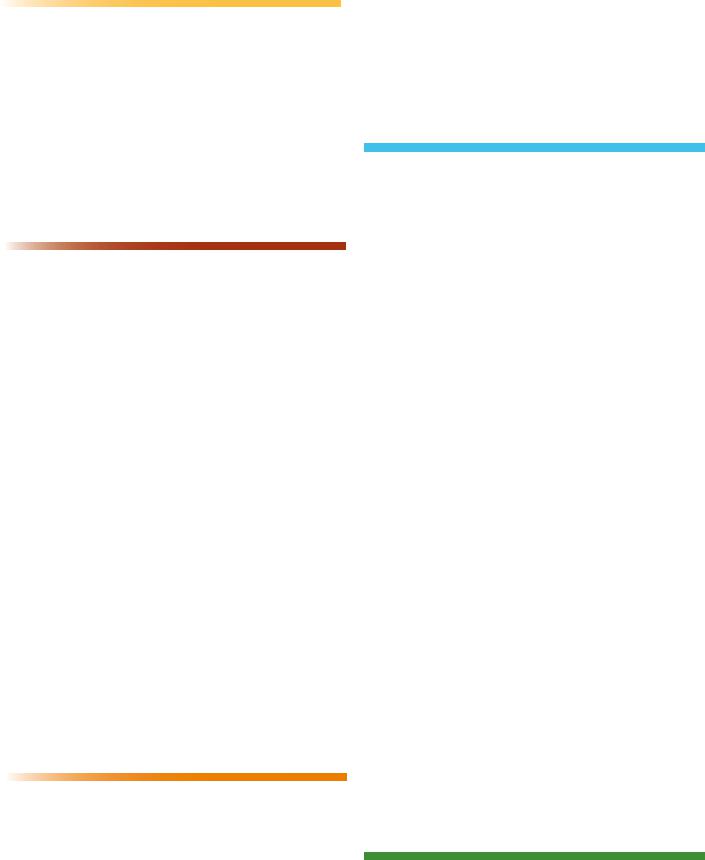
Table of contents
1
Introduction |
1:7 |
Machine overview |
1:8 |
Front side....................................................................... |
1:8 |
Rear side........................................................................ |
1:9 |
Top parts....................................................................... |
1:9 |
Accessory tray.............................................................. |
1:9 |
Included accessories |
1:10 |
Presser feet.................................................................. |
1:10 |
Stitch overview |
1:12 |
Utility stitches............................................................. |
1:12 |
Decorative stitches..................................................... |
1:15 |
2Alphabets.................................................................... |
1:21 |
Preparations |
2:1 |
Unpacking |
2:2 |
Connecting the foot control cord |
2:2 |
Connect the power cord |
|
and foot control |
2:2 |
Pack away after sewing |
2:3 |
LED lights |
2:3 |
Free arm |
2:3 |
Thread cutter |
2:3 |
Electronic knee-lift |
2:3 |
Spool pins |
2:4 |
Threading the machine |
2:5 |
Needle threader............................................................ |
2:5 |
Thread sensor |
2:6 |
Bobbin winding |
2:7 |
Inserting the bobbin |
2:8 |
IDT™ system (Integrated Dual Feed) |
2:9 |
Attaching the Dynamic spring foot 6D |
2:9 |
Changing the presser foot |
2:10 |
Needles |
2:10 |
Changing the needle |
2:11 |
USB ports |
2:11 |
USB embroidery stick................................................ |
2:11 |
Complimentary software (PC) |
2:12 |
How to update your machine |
2:12 |
Buttons and indicators |
2:13 |
3 |
3:1 |
PFAFF® creative™ Color Touch Screen |
|
Start view |
3:2 |
Main parts |
3:2 |
Task bar......................................................................... |
3:2 |
Option bar..................................................................... |
3:3 |
Common icons |
3:3 |
Selection menu |
3:4 |
Selection menu - overview......................................... |
3:4 |
Embroidery edit |
3:6 |
Embroidery stitch-out |
3:7 |
Settings menu |
3:8 |
Machine settings........................................................... |
3:8 |
Screen settings............................................................ |
3:11 |
Sound settings............................................................ |
3:11 |
Info menu |
3:12 |
Quick help |
3:12 |
4 |
|
Sewing mode |
4:1 |
Sewing mode - overview |
4:2 |
Select a stitch |
4:3 |
Sewing recommendations |
4:3 |
Machine settings |
4:3 |
Raise and lower the presser foot |
4:3 |
Stitch settings |
4:4 |
Stitch width................................................................... |
4:4 |
Stitch positioning......................................................... |
4:4 |
Stitch length.................................................................. |
4:4 |
Stitch density................................................................ |
4:5 |
Mirroring....................................................................... |
4:5 |
Balance........................................................................... |
4:5 |
Buttonhole slit length.................................................. |
4:6 |
Button stitch repetition................................................ |
4:6 |
Adjust thread tension.................................................. |
4:7 |
Free-motion options |
4:8 |
Sequence start position |
4:9 |
Save options |
4:9 |
Option bar |
4:11 |
Speed control.............................................................. |
4:11 |
Tie-off options............................................................. |
4:11 |
Sewing programs....................................................... |
4:12 |
Sequencing.................................................................. |
4:13 |
Stitch Creator™ feature............................................. |
4:13 |
Sewing techniques |
4:14 |
Sewing in zippers....................................................... |
4:14 |
Sewing hems in heavy fabric.................................... |
4:14 |
Three-step zigzag stitch............................................ |
4:15 |
Blindhem stitch........................................................... |
4:15 |
Buttonholes................................................................. |
4:16 |
Sew on a button.......................................................... |
4:18 |
Darning........................................................................ |
4:18 |
Special sewing techniques |
4:21 |
Four direction sewing................................................ |
4:21 |
Stacking stitches......................................................... |
4:22 |
Ribbon stitches............................................................ |
4:22 |
Common sewing pop-ups |
4:23 |
5 |
|
Sequencing |
5:1 |
Sequencing - overview |
5:2 |
Open and exit sequencing |
5:3 |
Create a sequence |
5:3 |
Sequence commands................................................... |
5:4 |
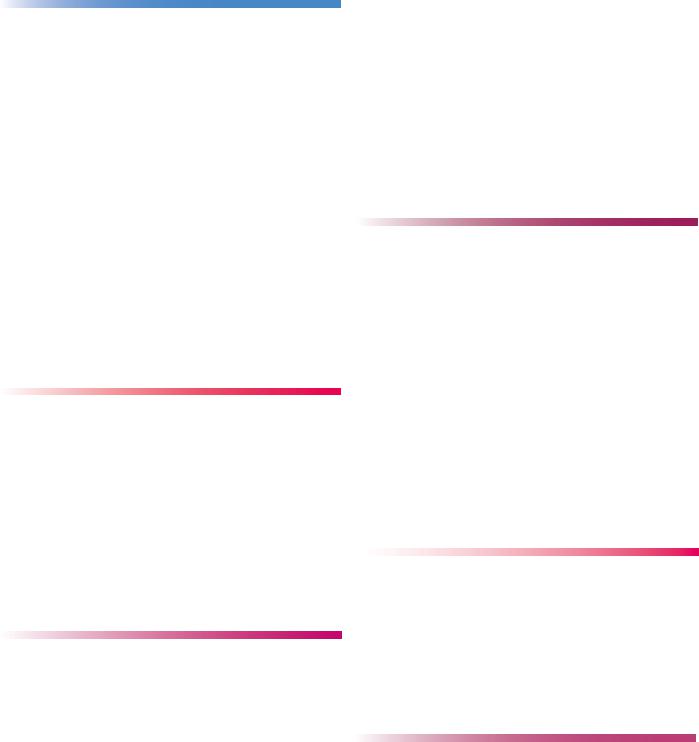
Horizontal preview...................................................... |
5:5 |
Directional stitches....................................................... |
5:5 |
Zoom to all.................................................................... |
5:6 |
Loading and sewing a sequence |
5:6 |
Saving a sequence |
5:7 |
Important sequencing information |
5:8 |
Common sequencing pop-ups |
5:8 |
6 |
|
Stitch Creator™ feature |
6:1 |
Stitch Creator™ feature - overview |
6:2 |
Open and exit Stitch Creator™ feature..................... |
6:3 |
Definition of a stitch point ......................................... |
6:3 |
Start creating - add a stitch or stitch point............... |
6:3 |
Select stitches/stitch points........................................ |
6:3 |
Multi-select.................................................................... |
6:4 |
Delete selected stitch point......................................... |
6:4 |
Duplicate selected stitch point................................... |
6:4 |
Insert a new stitch point.............................................. |
6:4 |
Zoom.............................................................................. |
6:4 |
Mirroring side to side.................................................. |
6:5 |
Mirroring end to end................................................... |
6:5 |
Triple stitch................................................................... |
6:5 |
Touch functions |
6:6 |
Position of the marked stitch point |
6:6 |
Loading and sewing a stitch |
6:7 |
Saving a stitch |
6:7 |
Common Stitch Creator™ feature pop-ups |
6:8 |
Important Stitch Creator™ feature information |
6:8 |
7 |
|
Embroidery mode – preparations |
7:1 |
Embroidery unit overview |
7:2 |
Embroidery hoop overview |
7:3 |
Built-in designs |
7:3 |
Embroidery collection |
7:3 |
Connect the embroidery unit |
7:3 |
Remove the embroidery unit |
7:4 |
Attaching the Dynamic spring foot 6D |
7:4 |
Slide on the hoop |
7:5 |
To hoop the fabric |
7:5 |
Getting started embroidering |
7:6 |
8 |
|
Embroidery mode – edit |
8:1 |
Embroidery edit - overview |
8:2 |
Load a design |
8:3 |
Load a font |
8:3 |
Load a stitch |
8:4 |
Zoom Options |
8:4 |
Select design(s) |
8:5 |
Stitch-out order |
8:6 |
Adjustments |
8:6 |
Group............................................................................. |
8:6 |
Delete............................................................................. |
8:6 |
Duplicate....................................................................... |
8:6 |
Mirroring....................................................................... |
8:6 |
Move design into hoop............................................... |
8:6 |
Undo.............................................................................. |
8:6 |
Redo............................................................................... |
8:6 |
Touch functions |
8:7 |
Move.............................................................................. |
8:7 |
Rotate............................................................................. |
8:7 |
Scale................................................................................ |
8:7 |
Pan.................................................................................. |
8:7 |
Option bar |
8:8 |
Save to Personal designs............................................. |
8:8 |
More options................................................................. |
8:9 |
Select hoop.................................................................... |
8:9 |
Thread color edit........................................................ |
8:10 |
Basic Shape Creator™ feature.................................. |
8:11 |
Embroidery stitch editor........................................... |
8:18 |
Embroidery text editor.............................................. |
8:21 |
Embroidery edit pop-ups |
8:23 |
9 |
9:1 |
Embroidery mode – stitch-out |
|
Embroidery stitch-out - overview |
9:2 |
Embroidery information |
9:2 |
Crosshair |
9:3 |
Color list |
9:3 |
Zoom options |
9:3 |
Current stitch |
9:3 |
Go to stitch |
9:3 |
Basting |
9:4 |
Thread tension |
9:4 |
Option bar |
9:5 |
More options................................................................. |
9:5 |
Hoop position............................................................... |
9:6 |
Speed control................................................................ |
9:6 |
Precise positioning....................................................... |
9:7 |
Common Embroidery stitch-out pop-ups |
9:11 |
10 |
|
Files & Folders |
10:1 |
Files & Folders - overview |
10:2 |
File formats |
10:3 |
Browse Files & Folders |
10:3 |
Load a file |
10:5 |
Open a folder |
10:5 |
Organize |
10:6 |
Common Files & Folders pop-ups |
10:7 |
11 |
|
Maintenance |
11:1 |
Cleaning the machine |
11:2 |
Non-original parts and accessories |
11:2 |
Troubleshooting |
11:3 |
Index |
11:5 |

1
Introduction
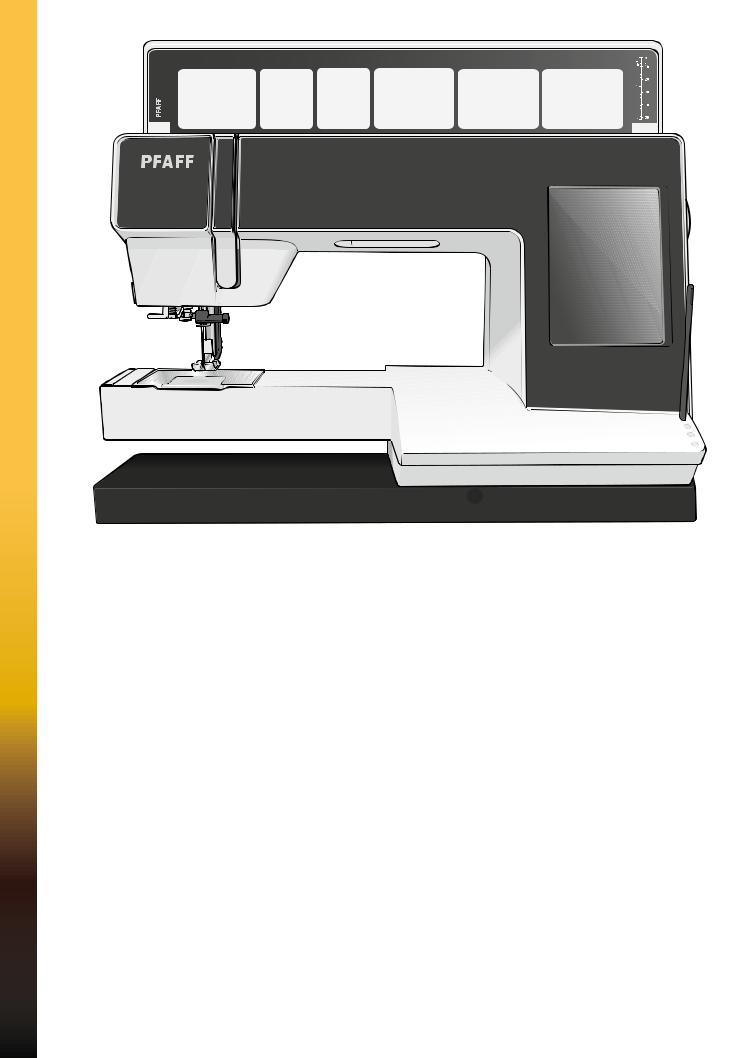
Introduction
1 |
|
|
|
|
|
|
17 |
|
11 12 |
13 14 15 16 |
|
|
10 |
|
|
|
|
|
18 |
2 |
|
9 |
19 |
3 |
7 |
8 |
20 |
4 |
6 |
|
|
|
|
||
|
|
|
21 |
5 |
|
|
|
|
|
|
22 |
|
|
|
23 |
Machine overview
Front side
1.Lid with stitch categories
2.Threading slots
3.Thread cutter
4.Sensormatic buttonhole foot socket
5.Free arm
6.LED lights
7.Reverse
8.Reverse indicator
9.Action indicator
10.Presser foot down and pivot toggle
11.Presser foot up and extra lift toggle
12.Start/stop
13.Thread snips
14.Immediate tie-off
15.Stitch restart
1:8
31
30
24 |
29 |
|
26 27 
 28
28
25
16.Needle up/down
17.Button ruler
18.Handwheel
19.PFAFF® creative™ Color Touch Screen
20.Built-in USB ports
21.Stylus holder
22.Main switch, connectors for power cord and foot control
23.Connection for knee-lift
Needle area
24.Built-in needle threader
25.Bobbin cover
26.Needle plate
27.Presser foot
28.Presser foot bar and presser foot holder
29.Needle thread guide
30.Needle screw
31.Needle bar
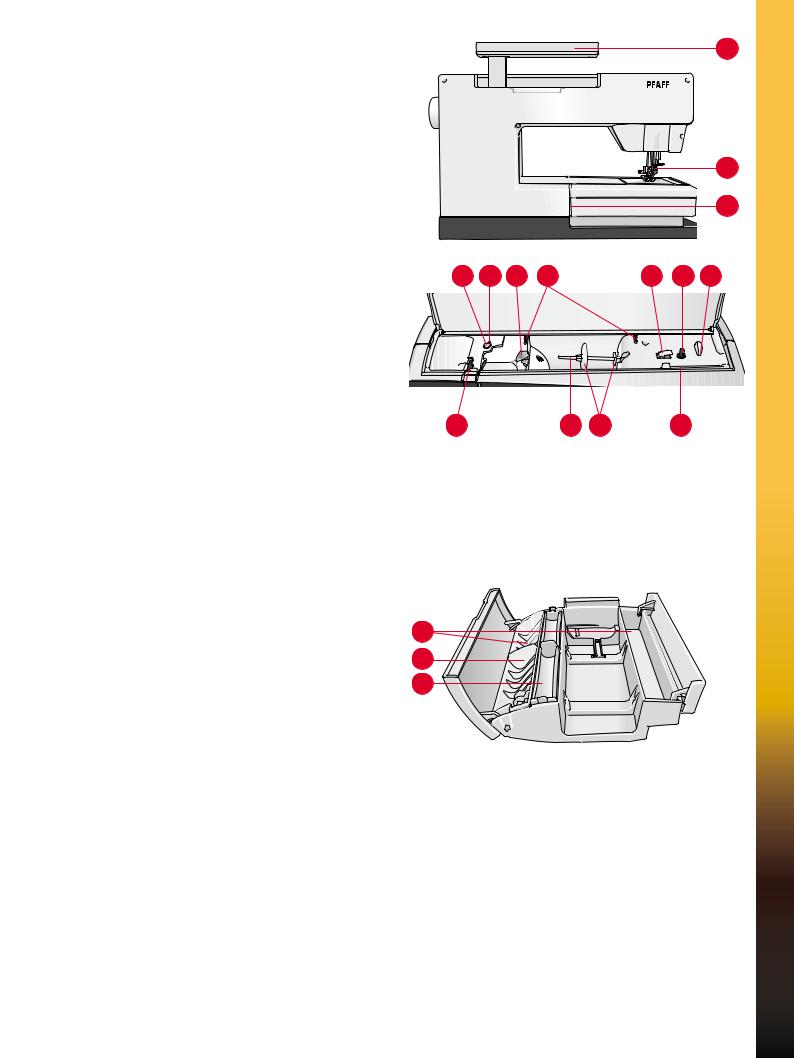
Rear side
32.Handle
33.IDT™ system
34.Embroidery unit connection socket
Top parts
35.Thread guide for needle thread and for bobbin winding
36.Bobbin winder thread guide and pre-tension device
37.Thread guide
38.Bobbin thread guides
39.Bobbin winder lever
40.Bobbin spindle
41.Bobbin thread cutter
42.Auxiliary spool pin
43.Spool caps
44.Spool pin
45.Take-up lever
32
33
34
35 |
36 |
37 |
38 |
39 |
40 |
41 |
45 |
44 |
43 |
42 |
Accessory tray
The accessory tray features special compartments for presser feet and bobbins, plus space for needles and other accessories. Store the accessories in the tray so they are easily accessible.
46.Space for accessories
47.Removable tray for presser feet
48.Removable bobbin holder
46 |
47 |
48 |
1:9
Introduction
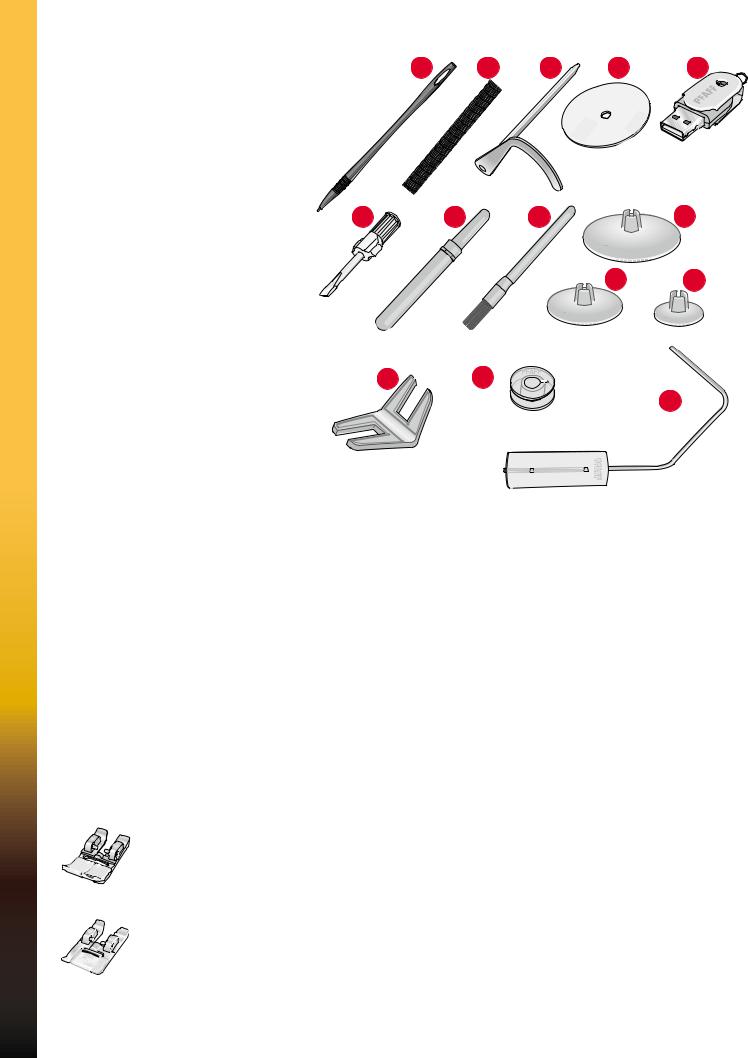
Included accessories
Accessories
55.Stylus
56.Thread net (2)
57.Edge guide
58.Felt pad (2)
59.USB Embroidery stick
60.Screwdriver
61.Seam ripper
62.Brush
63.Spool cap, large (2)
64.Spool cap, medium
65.Spool cap, small
66.Multi-purpose tool
67.Bobbins (10)
68.Knee-lift
55 |
56 |
57 |
58 |
59 |
60 |
61 |
62 |
63 |
|
|
64 |
65 |
66  67
67
68
Included accessories not in picture
•Complimentary software (PC) to download
•Foot control
•Power cord
•USB cord (P/N:412 62 59-04)
•Needles
•Microfiber cloth
•creative™ 4.5 Embroidery collection
Introduction
Presser feet
0A - Standard presser foot with IDT™ system
(attached on the machine upon delivery)
This foot is used mainly for straight stitching and zigzag stitching with a stitch length longer than 1.0mm.
1A - Fancy stitch foot with IDT™ system
This foot is used for decorative stitches. The groove on the underside of the foot is designed to flow smoothly over the stitches.
1:10
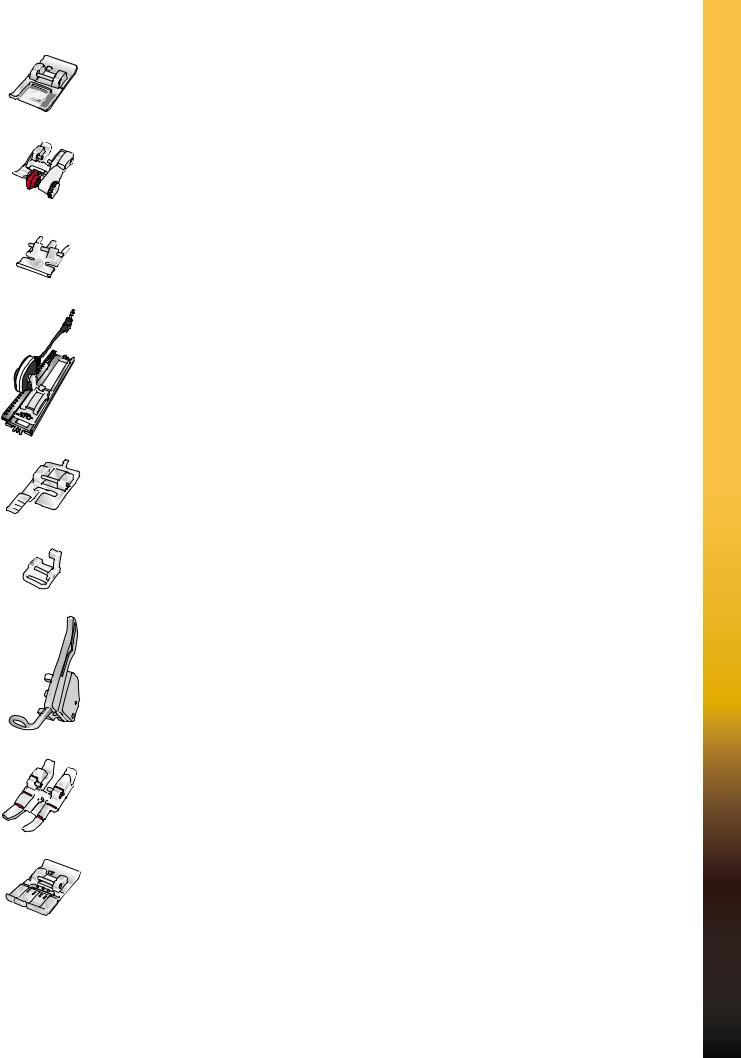
2A - Fancy stitch foot
When sewing decorative stitches or short zigzag stitches and other utility stitches with less than 1.0mm stitch length, use this foot. The groove on the underside of the foot is designed to flow smoothly over the stitches.
3 - Blindhem foot with IDT™ system
This foot is used for blindhem stitches. The toe on the foot guides the fabric. The red guide on the foot is designed to ride along the fold of the hem edge.
4 - Zipper foot with IDT™ system
This foot can be snapped on either the right or the left of the needle, making it easy to sew close to both sides of the zipper teeth. Move needle position to right or left to sew closer to zipper teeth.
5A - Sensormatic buttonhole foot
When connected to the machine, the buttonhole is sewn in a suitable length to the button size that has been entered into the machine.
5M - Manual buttonhole foot
This foot is used for sewing manual buttonholes. Use the markings on the foot to position the garment edge. The finger on the back of the foot holds cording for corded buttonhole.
6A - Embroidery/Sensormatic free-motion foot
This foot is used for embroidery and free-motion sewing. This foot can also be used for darning.
6D - Dynamic spring foot
This foot is always recommended for embroidery. It is also used for free-motion sewing, quilting and embroidering on especially thick or spongy fabric. When using the Dynamic spring foot for free-motion, select Dynamic spring foot free-motion setting in the Freemotion options window in sewing mode.
1/4” quilting foot with IDT™ system
This foot is perfect for piecing and patchwork, especially when used in conjunction with the straight stitch needle plate. The distance from the needle to the outer edge of the right toe is 1/4” (6mm). The distance from the needle to the inner edge of the right toe is 1/8” (3mm).
8 - Maxi-stitch foot
This foot is used for side-motion stitches.
Important: Make sure that the IDT™ system is disengaged when using presser foot 2A, 5A, 5M, 6A, 6D and 8.
1:11
Introduction
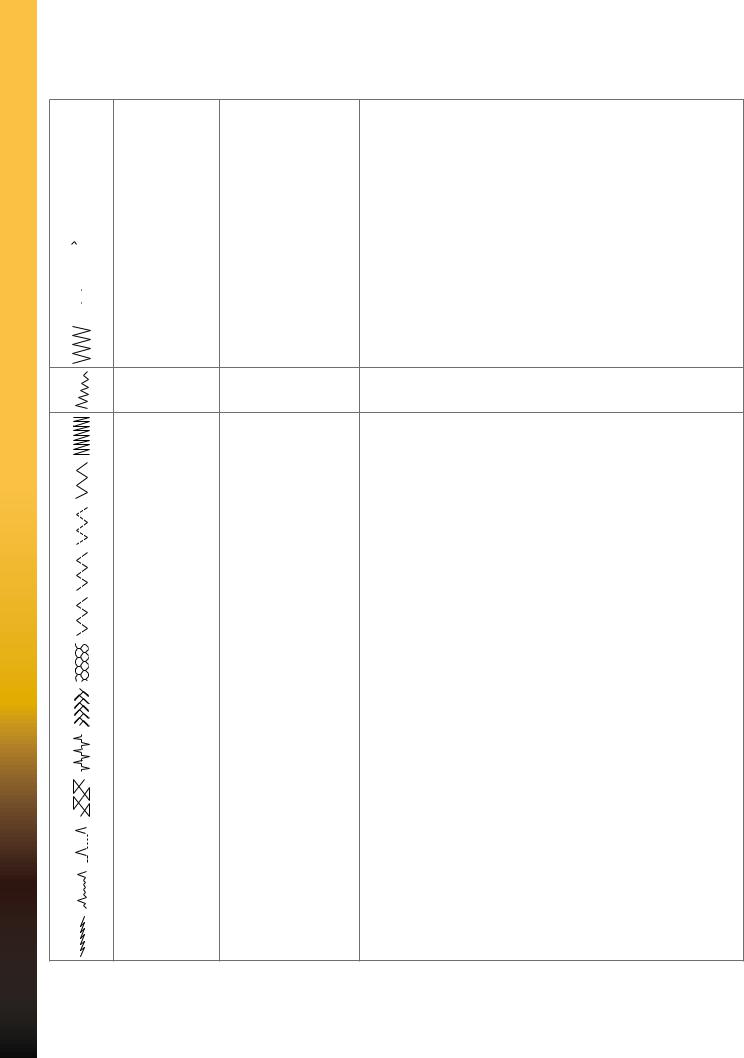
Introduction
Stitch overview
Utility stitches
Stitch |
Stitch number |
Name |
Description |
||
|
|
|
|
|
|
|
|
|
1.1.1 |
Straight stitch |
For seaming and topstitching. Select from 37 different needle |
|
|
|
|||
|
|
|
|
|
positions. |
|
|
|
|
|
|
|
|
|
|
|
Note: This stitch makes a stronger tie-off than stitch 2.1.1. |
|
|
|
|
|
|
|
|
|
|
|
|
|
|
|
1.1.2 |
Stretch triple straight |
Reinforced seam. Topstitching. |
|
|
|
|||
|
|
|
|||
|
|
|
|
stitch |
|
|
|
|
|
|
|
|
|
|
|
|
|
|
|
|
|
|
|
|
|
|
1.1.3 |
Straight stitch reverse |
Sew continuous reverse with strong tie-off. |
|
|
|
|||
|
|
|
|
|
|
|
|
|
|
|
|
|
|
|
|
|
|
|
|
|
|
|
|
|
|
|
1.1.4 |
Basting stitch |
Single stitch used for basting. Touch foot control to sew one stitch. |
|
|
|
|||
|
|
|
|
|
Move fabric manually to desired position and touch foot control |
|
|
|
|
|
|
|
|
|
|
|
again to sew another stitch. |
|
|
|
|
|
|
|
|
|
|
|
|
|
|
|
1.1.5 |
Zigzag stitch |
Reinforce seams, clean finish, stretch sewing, lace insertion. |
1.1.6Zigzag stitch, right or Reinforce seams, clean finish, stretch sewing. left needle position
1.1.7 |
Z-zigzag stitch |
Applique, couching, eyelets. |
|
|
|
1.1.8 |
Stretch triple zigzag |
Elastic stitch for decorative hems or topstitching. |
|
stitch |
|
|
|
|
1.1.9 |
Three-step zigzag |
Sewing elastic, darning, patching. |
|
stitch |
|
|
|
|
1.1.10 |
Elastic stitch |
Sewing elastic, darning, patching. |
|
|
|
1.1.11 |
Triple stretch stitch |
Sewing elastic, darning, patching and decorative sewing. |
|
|
|
1.1.12 |
Honeycomb stitch |
Decorative stitch for stretch fabrics and hems. Also used with elastic |
|
|
thread in the bobbin. |
|
|
|
1.1.13 |
Bridging stitch |
Joining fabrics and quilt batting, decorative stitch for quilting, |
|
|
hemstitching. |
|
|
|
1.1.14 |
Foundation elastic |
Joining stitch for undergarments, terry cloth, leather, bulky fabrics |
|
stitch |
where overlapping the seams. |
|
|
|
1.1.15 |
Crosshem stitch |
Elastic decorative hem for stretch fabrics. |
|
|
|
1.1.16 |
Blindhem stitch |
Sewing blindhems on woven fabrics. |
|
|
|
1.1.17 |
Elastic blindhem stitch |
Sewing blindhems on stretch fabrics. |
|
|
|
1.1.18 |
Stretch tricot stitch |
Sewing seams on stretch fabrics. |
1:12

|
|
|
|
|
|
|
|
|
|
|
|
|
|
|
|
|
|
1.2.1 |
Closed overlock |
Seam and overcast stretch fabrics in one step. |
|
|
|
|
|
|
|
|
|
|
|
|
|
|
|
|
|
|
|||
|
|
|
|
|
|
|
|
|
|
|
|
|
|
|
|
|
|
|
|
|
|
|
|
|
|
|
|
|
|
|
|
|
|
|
|
|
|
|
|
|
|
|
1.2.2 |
Closed overlock |
Seam and overcast in one step. |
|||||||||||||||||
|
|
|
|
|
|
|
|
|
|
|
|
|
|
|
|
|
|
|
|
|
|
|
|
|
|
|
|
|
|
|
|
|
|
|
|
|
|
|
1.2.3 |
Closed overlock |
Seam and overcast in one step with reinforced edge. |
|
|
|
|
|
|
|
|
|
|
|
|
|
|
|
|
|
|
|||
|
|
|
|
|||||||||||||||||
|
|
|
|
|
|
|
|
|
|
|
|
|
|
|
|
|
||||
|
|
|
|
|
|
|
|
|
|
|
|
|
|
|
|
|
|
|
|
|
|
|
|
|
|
|
|
|
|
|
|
|
|
|
|
|
|
|
|
|
|
|
|
|
|
|
|
|
|
|
|
|
|
|
|
|
|
|
|
|
|
|
|
|
|
|
|
|
|
|
|
|
|
|
|
|
|
|
|
|
|
|
|
|
|
|
|
|
|
|
|
|
|
|
|
|
|
|
|
|
|
|
|
|
|
|
|
|
|
|
|
|
|
|
|
|
|
|
|
|
1.2.4 |
Elastic overcast |
Seam and overcast stretch fabrics in one step. |
||
|
|
|
|
|
|
|
|
|
|
|
|
|
|
|
||||||
|
|
|
|
|
|
|
|
|
|
|
|
|
|
|
||||||
|
|
|
|
|
|
|
|
|
|
|
|
|
|
|
|
|
|
|
|
|
|
|
|
|
|
|
|
|
|
|
|
|
|
|
|
|
|
|
|
|
|
|
|
|
|
|
|
|
|
|
|
|
|
|
|
|
|
|
|
|
|
|
|
|
|
|
|
|
|
|
|
|
|
|
|
|
|
|
|
|
|
|
|
|
|
|
|
|
|
|
|
|
|
|
|
|
|
|
|
1.2.5 |
Standard overcast |
Seam and overcast stretch fabrics in one step with reinforced edge. |
||
|
|
|||||||||||||||||||
|
|
|
|
|
|
|
|
|
|
|
|
|
|
|
|
|
|
|
|
|
|
|
|
|
|
|
|
|
|
|
|
|
|
|
|
|
|
|
|
|
|
|
|
|
1.2.6 |
Overlock |
Seam and overcast stretch fabrics in one step. |
|||||||||||||||
|
||||||||||||||||||||
|
|
|
|
|
|
|
|
|
|
|
|
|
|
|
|
|
|
|
|
|
|
|
|
|
|
|
|
|
|
|
|
|
|
|
|
|
|
|
|
|
|
|
|
|
|
|
|
|
|
|
|
|
|
|
|
|
|
|
1.2.7 |
Closed overlock |
Seam and overcast in one step, patch, hem. |
|
|
|
|||||||||||||||||||
|
|
|
|
|
|
|
|
|
|
|
|
|
|
|
|
|
|
|
|
|
|
|
|
|
|
|
|
|
|
|
|
|
|
|
|
|
|
|
|
|
|
|
1.2.8 |
Stretch knit overlock |
Seam and overcast stretch fabrics in one step. |
|||||||||||||||||
|
|
|
|
|
|
|
|
|
|
|
|
|
|
|
|
|
|
|
|
|
|
1.2.9 |
Reinforced overlock |
Seam and overcast stretch fabrics in one step and reinforce. |
|||||||||||||||||
|
|
|
|
|
|
|
|
|
|
|
|
|
|
|
|
|
|
|
|
|
|
|
|
|
|
|
|
|
|
|
|
|
|
|
|
|
|
1.2.10 |
Finished edge overlock |
Seam and overcast stretch fabrics in one step with reinforced edge. |
|
|
|
|
|
|
|
|
|
|
|
|
|
|
|
|
|
|
|
|||
|
|
|
|
|
|
|
|
|
|
|
|
|
|
|
|
|
|
|
|
|
|
|
|
|
|
|
|
|
|
|
|
|
|
|
|
|
|
|
|
|
|
|
|
|
|
|
|
|
|
|
|
|
|
|
|
|
|
|
|
|
|
|
|
|
|
|
|
|
|
|
|
|
|
|
|
1.2.11 |
Mock cover hem |
Create the look of a serger cover hem for stretch fabrics. |
|||||
|
|
|
|
|
|
|
|
|
|
|
|
|
||||||||
|
|
|
|
|
|
|
|
|
|
|
|
|
|
|
|
|
|
|
|
|
|
|
|
|
|
|
|
|
|
|
|
|
|
|
|
|
|
|
|
|
|
|
|
|
|
|
|
|
|
|
|
|
|
1.2.12 |
Open overlock |
Create decorative overlock blindhem for woven fabrics. |
||||||
|
|
|
|
|||||||||||||||||
|
|
|
|
|
|
|
|
|
|
|
|
|
|
|
|
|
|
|
blindhem |
|
|
|
|
|
|
|
|
|
|
|
|
|
|
|
|
|
|
|
|
|
|
|
|
|
|
|
|
|
|
|
|
|
|
|
|
|
|
|
|
|
|
|
|
|
|
|
|
|
|
|
|
|
|
1.2.13 |
Closed overlock |
Create decorative overlock blindhem for stretch fabrics. |
|||||||
|
|
|
|
|
|
|
|
|
|
|
|
|||||||||
|
|
|
|
|
|
|
|
|
|
|
|
|
|
|
|
|
|
|
blindhem |
|
|
|
|
|
|
|
|
|
|
|
|
|
|
|
|
|
|
|
|
|
|
|
|
|
|
|
|
|
|
|
|
|
|
|
|
|
|
|
|
|
|
|
|
|
|
|
|
|
|
|
|
|
|
1.3.1 |
Linen buttonhole |
Buttonhole for blouses, shirts and linen. |
|||||||
|
|
|
|
|
|
|
||||||||||||||
|
|
|
|
|
|
|
|
|
|
|
|
|
|
|
|
|
|
|
|
|
|
|
|
|
|
|
|
|
|
|
|
|
|
|
|
|
|
|
|
|
|
|
|
|
|
|
|
|
|
|
|
|
1.3.2 |
Standard buttonhole |
Basic buttonhole for blouses, shirts and jackets. Also for pillowcases. |
|||||||
|
|
|
|
|
|
|
|
|
|
|
||||||||||
|
|
|
|
|
|
|
|
|
|
|
|
|
|
|
|
|
|
|
|
|
|
|
|
|
|
|
|
|
|
|
|
|
|
|
|
|
|
|
|
|
|
|
|
|
|
|
|
|
|
|
|
|
1.3.3 |
Rounded buttonhole |
Buttonhole for garments. |
|||||||
|
|
|
|
|
|
|
|
|
|
|||||||||||
|
|
|
|
|
|
|
|
|
|
|
|
|
|
|
|
|
|
|
with pointed tack |
|
|
|
|
|
|
|
|
|
|
|
|
|
|
|
|
|
|
|
|
|
|
|
|
|
|
|
|
|
|
|
|
|
|
|
|
|
|
|
|
|
|
|
|
|
|
|
|
|
|
|
1.3.4 |
Rounded buttonhole |
Buttonhole for garments. |
||||||||||
|
|
|
|
|
|
|
||||||||||||||
|
|
|
|
|
|
|
|
|
|
|
|
|
|
|
|
|
|
|
with lengthwise tack |
|
|
|
|
|
|
|
|
|
|
|
|
|
|
|
|
|
|
|
|
|
|
|
|
|
|
|
|
|
|
1.3.5 |
Rounded buttonhole |
Buttonhole for garments. |
||||||||||
|
|
|
|
|
|
|
|
|
|
|
|
|||||||||
|
|
|
|
|
|
|
|
|
|
|
|
|
|
|
|
|
|
|
with crosswise tack |
|
|
|
|
|
|
|
|
|
|
|
|
|
|
|
|
|
|
|
|
|
|
|
|
|
|
|
|
1.3.6 |
Eyelet buttonhole with |
Tailors buttonhole or decorative buttonhole. |
||||||||||||
|
|
|
|
|
|
|
||||||||||||||
|
|
|
|
|
|
|
|
|
|
|
|
|
|
|
|
|
|
|
pointed tack |
|
|
|
|
|
|
|
|
|
|
|
|
|
|
|
|
|
|
|
|
|
|
|
|
|
|
|
|
|
|
|
|
|
|
|
|
|
|
|
|
|
|
|
|
|
|
|
|
1.3.7 |
Eyelet buttonhole with |
Tailors buttonhole for jackets and trousers. |
|||||||||||||
|
|
|
|
|
|
|
|
|
||||||||||||
|
|
|
|
|
|
|
|
|
|
|
|
|
|
|
|
|
|
|
lengthwise tack |
|
|
|
|
|
|
|
|
|
|
|
|
|
|
|
|
|
|
|
|
|
|
|
|
|
|
|
|
|
|
|
|
|
|
|
|
|
|
|
|
|
|
|
|
|
|
|
1.3.8 |
Rounded buttonhole |
Buttonhole for light garments or jackets. |
||||||||||||||
|
|
|
|
|
|
|
||||||||||||||
|
|
|
|
|
|
|
|
|
|
|
|
|
|
|
|
|
|
|
|
|
|
|
|
|
|
|
|
|
|
|
|
|
|
|
|
|
|
|
|
|
|
1:13
Introduction

Introduction
|
|
|
1.3.9 |
Decorative buttonhole |
Decorative buttonhole. |
||
|
|
||||||
|
|
|
|
|
with triangle tack |
|
|
|
|
|
|
|
|
|
|
|
|
|
|
1.3.10 |
Stretch buttonhole |
Buttonhole for stretch fabrics. |
|
|
|
|
|||||
|
|
||||||
|
|
|
|
|
|
|
|
|
|
|
|
|
|
|
|
|
|
|
|
1.3.11 |
Cross stitch buttonhole |
Decorative buttonhole. |
|
|
|
|
|||||
|
|
|
|
|
|
|
|
|
|
|
|
|
|
|
|
|
|
|
|
1.3.12 |
Decorative buttonhole |
Decorative buttonhole. |
|
|
|
|
|||||
|
|
||||||
|
|
|
|
|
|
|
|
|
|
|
|
|
|
|
|
|
|
|
|
|
|
|
|
|
|
|
1.3.13 |
Professional eyelet |
Professional tailors buttonhole for jackets and trousers. |
||
|
|
||||||
|
|
|
|
|
buttonhole |
|
|
|
|
|
|
|
|
|
|
|
|
|
|
|
|
|
|
|
|
|
1.3.14 |
Decorative eyelet |
Decorative buttonhole for jackets. |
||
|
|
|
|
|
buttonhole |
|
|
|
|
|
|
|
|
|
|
|
|
|
|
|
|
|
|
|
1.3.15 |
Heirloom round |
Decorative heirloom buttonhole. |
||||
|
|
|
|
|
buttonhole with |
|
|
|
|
|
|
|
pointed tack |
|
|
|
|
|
|
|
|
|
|
|
1.3.16 |
Button sewing |
Sew on buttons or tacking. |
||||
|
|
|
|
|
|
|
|
|
1.3.17 |
Bound buttonhole |
Foundation stitch for bound buttonhole. |
||||
|
|
|
|
|
|
|
|
|
1.4.1 |
Eyelet |
Heirloom sewing decorative trim. |
||||
|
|
|
|
|
|
|
|
|
1.4.2 |
Decorative eyelet |
Heirloom sewing decorative trim. |
||||
|
|
|
|
|
|
|
|
|
1.4.3 |
Decorative eyelet |
Heirloom sewing decorative trim. |
||||
|
|
|
|
|
|
|
|
|
1.4.4 |
Decorative eyelet |
Heirloom sewing decorative trim. |
||||
|
|
|
|
|
|
|
|
|
1.5.1 |
Programmable darning |
Darning holes or damaged fabric. |
||||
|
|
|
|
|
stitch |
|
|
|
|
|
|
|
|
|
|
|
|
|
|
1.5.2 |
Programmable |
Reinforced darning holes or damaged fabric. |
|
|
|
||||||
|
|
|
|||||
|
|
|
|
|
reinforced darning |
|
|
|
|
|
|
|
|
||
|
|
|
|
|
|
||
|
|
|
|
|
stitch |
|
|
|
|
|
|
|
|
||
|
|
|
|
|
|
||
|
|
|
|
|
|
|
|
|
1.5.3 |
Bartack |
Automatically reinforce seams and pockets. |
||||
|
|
||||||
|
|
|
|
|
|
|
|
|
|
|
|
|
|
|
|
|
1.5.4 |
Denim bartack |
Automatically reinforce seams and pockets decoratively. |
||||
|
|
|
|
|
|
|
|
|
1.5.5 |
Decorative bartack |
Automatically reinforce seams and pockets decoratively. |
||||
|
|
|
|
|
|
|
|
|
1.5.6 |
Cross bartack |
Automatically reinforce seams and pockets. |
||||
|
|
|
|
|
|
|
|
|
1.5.7 |
Decorative tack |
Automatically decorative topper for seams and pockets. |
||||
|
|
|
|
|
|
|
|
1:14
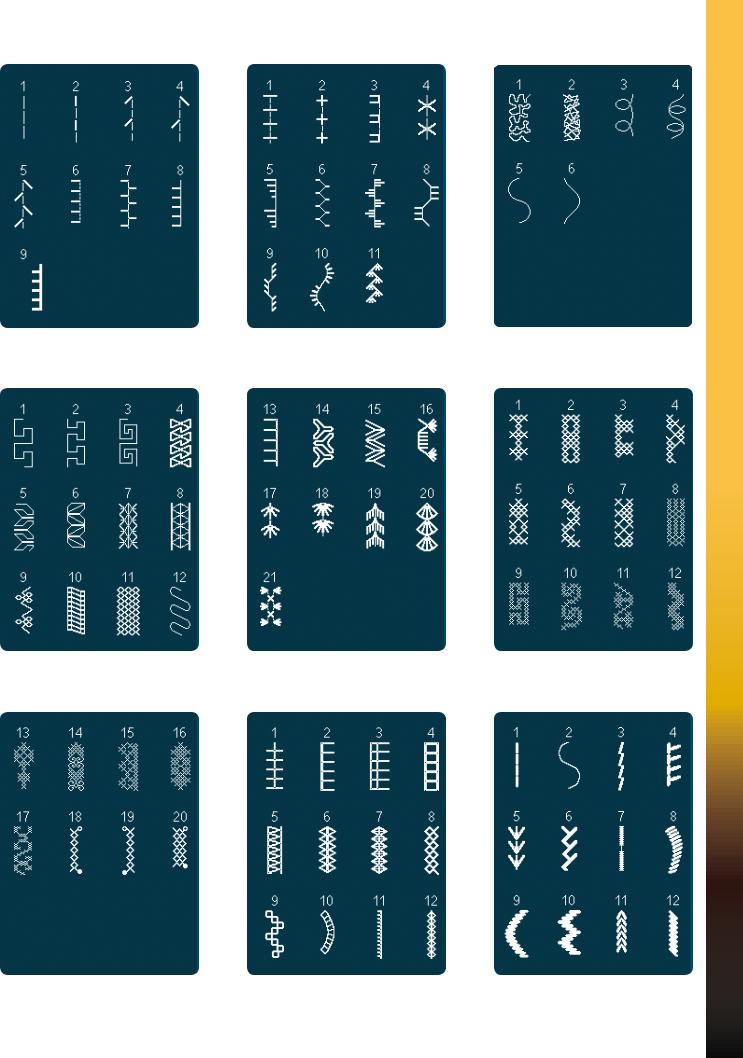
Decorative stitches
2.1 Quilt stitches - |
2.2 Quilt stitches - |
Handlook stitches |
Antique quilt stitches |
2.4 Quilt stitches - |
2.4 Quilt stitches - |
Crazy patch stitches |
Crazy patch stitches |
3.1 Needle art stitches - |
3.2 Needle art stitches - |
Cross stitches |
Hemstitches |
2.3 Quilt stitches - Stippling stitches
3.1 Needle art stitches - Cross stitches
3.3 Needle art stitches -
Antique hand embroidery stitches
1:15
Introduction
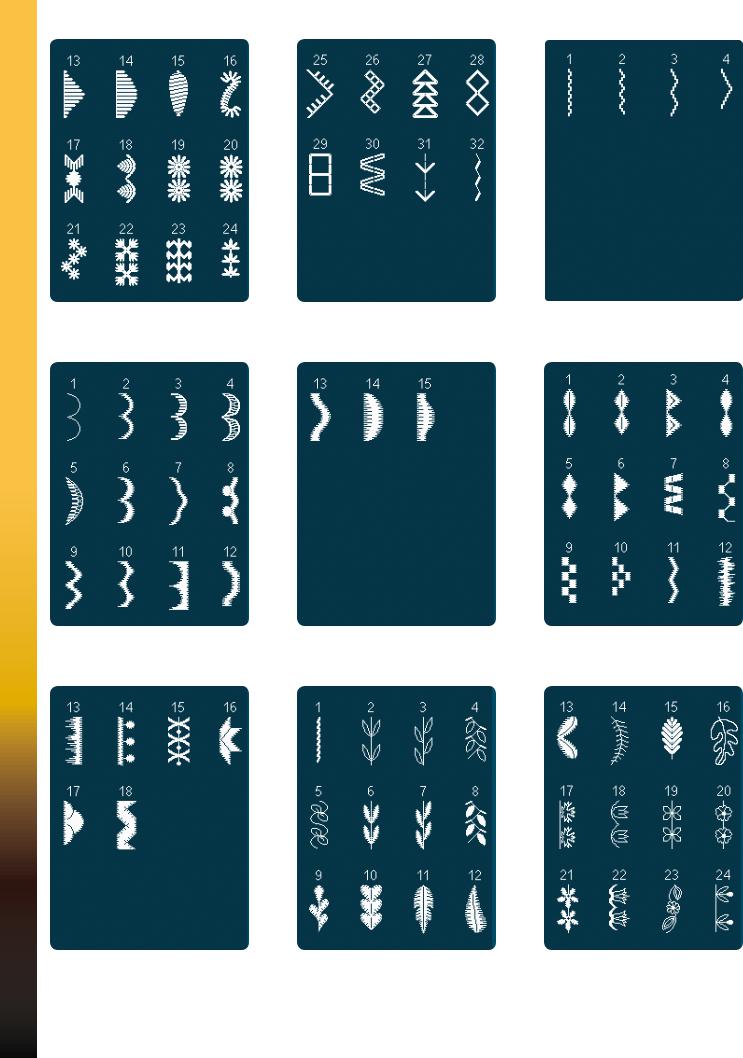
3.3 Needle art stitches - |
3.3 Needle art stitches - |
3.4 Needle art stitches - |
Antique hand embroidery stitches |
Antique hand embroidery stitches |
Smocking stitches |
4.1 Decorative stitches - |
4.1 Decorative stitches - |
4.2 Decorative stitches - |
Scallop edges |
Scallop edges |
Satin stitches |
Introduction
4.2 Decorative stitches - Satin stitches
1:16
4.3 Decorative stitches - |
4.3 Decorative stitches - |
Leaves and flowers |
Leaves and flowers |

4.3 Decorative stitches - |
4.4 Decorative stitches - |
4.4 Decorative stitches - |
Leaves and flowers |
Art stitches |
Art stitches |
4.4 Decorative stitches - |
4.5 Decorative stitches - |
4.5 Decorative stitches - |
Art stitches |
Ornamental stitches |
Ornamental stitches |
4.5 Decorative stitches - |
4.6 Decorative stitches - |
4.6 Decorative stitches - |
Ornamental stitches |
Bows and hearts |
Bows and hearts |
1:17
Introduction
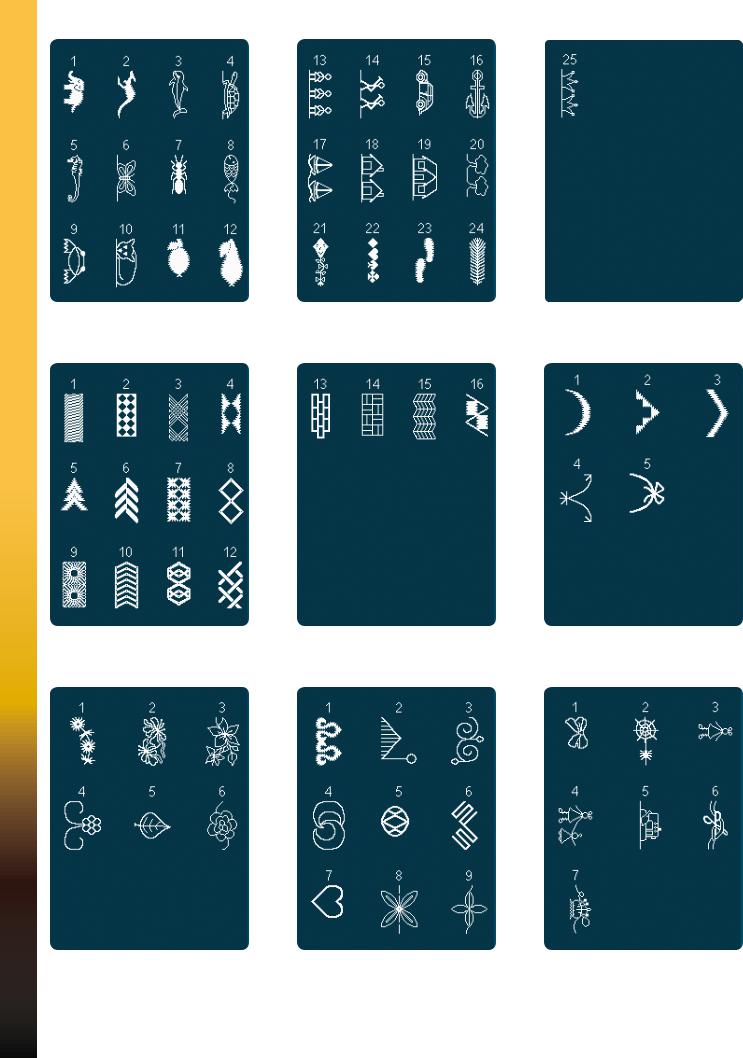
4.7 Decorative stitches - |
4.7 Decorative stitches - |
4.7 Decorative stitches - |
Fun stitches |
Fun stitches |
Fun stitches |
4.8 Decorative stitches - Borders |
4.8 Decorative stitches - Borders |
5.1 Maxi stitches - |
|
|
Scallop and satin stitches |
Introduction
5.2 Maxi stitches -
Leaves and flowers
1:18
5.3 Maxi stitches - |
5.4 Maxi stitches - |
Art stitches |
Fun stitches |

5.5 Maxi stitches - |
5.6 Monogram |
5.6 Monogram |
Stippling stitches |
|
|
5.6 Monogram |
5.6 Monogram |
6.1 Sewing techniques - |
|
|
Optional feet stitches |
6.1 Sewing techniques - |
6.1 Sewing techniques - |
6.2 Sewing techniques - |
Optional feet stitches |
Optional feet stitches |
Handlook quilt stitches |
1:19
Introduction
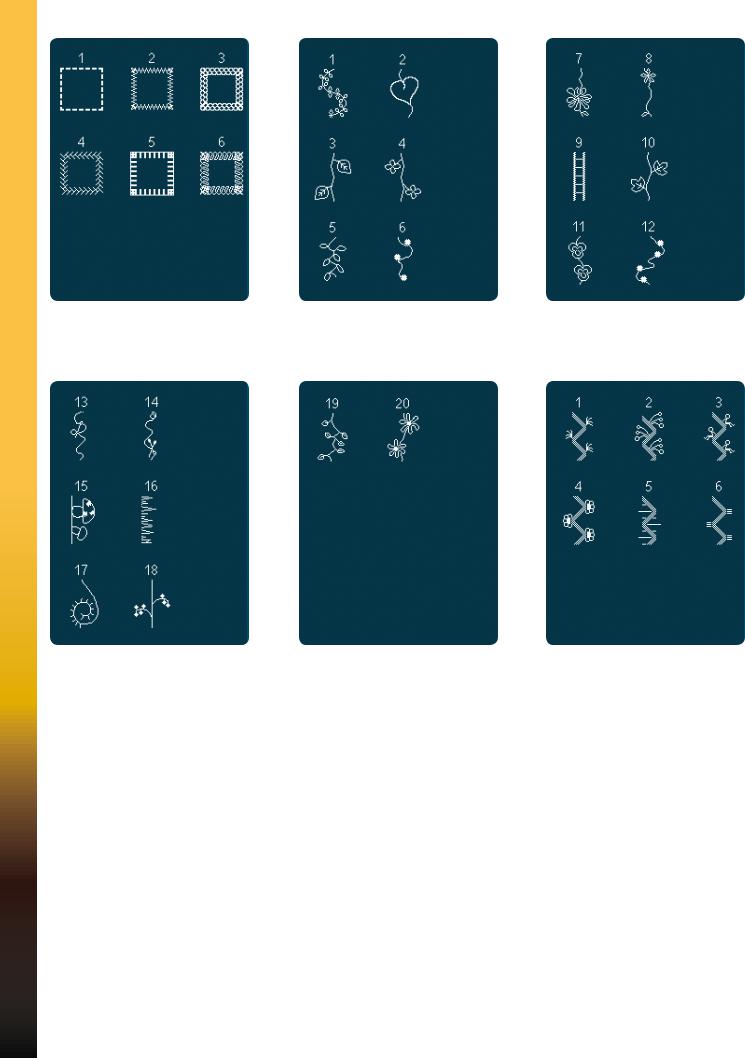
6.3 Sewing techniques - |
6.4 Sewing techniques - |
6.4 Sewing techniques - |
Four direction stitches |
Stacking stitches |
Stacking stitches |
6.4 Sewing techniques - |
6.4 Sewing techniques - |
6.5 Sewing techniques - |
Stacking stitches |
Stacking stitches |
Ribbon stitches |
Introduction
1:20
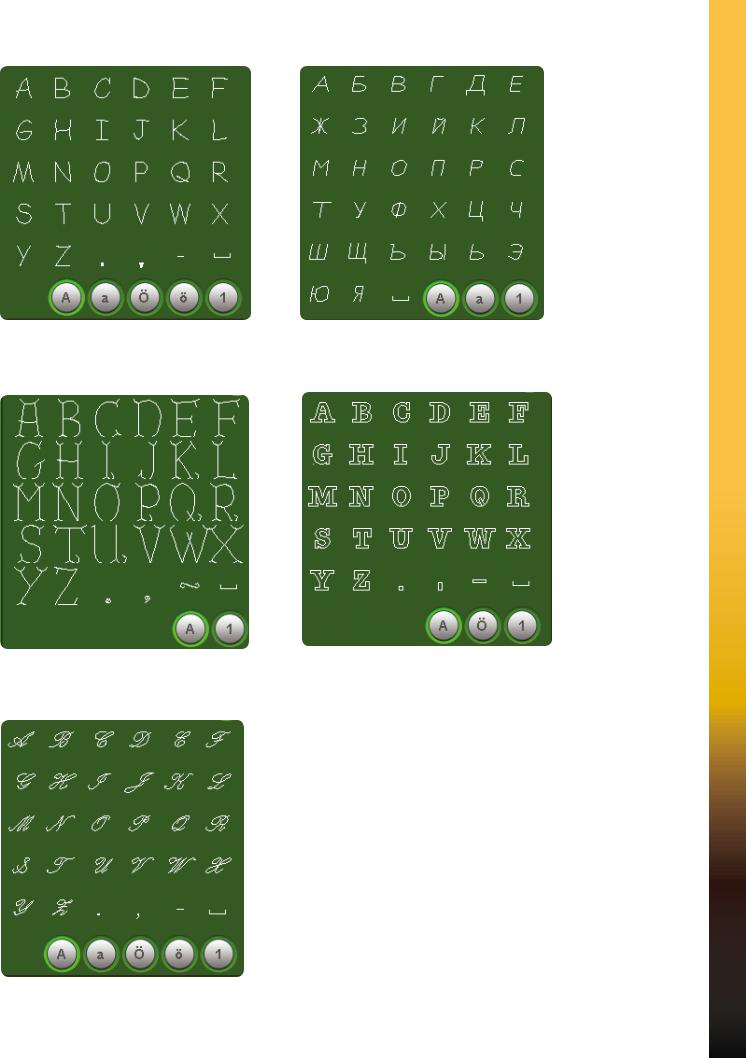
Alphabets
Comic |
Cyrillic |
Grand |
Outline |
Script
1:21
Introduction
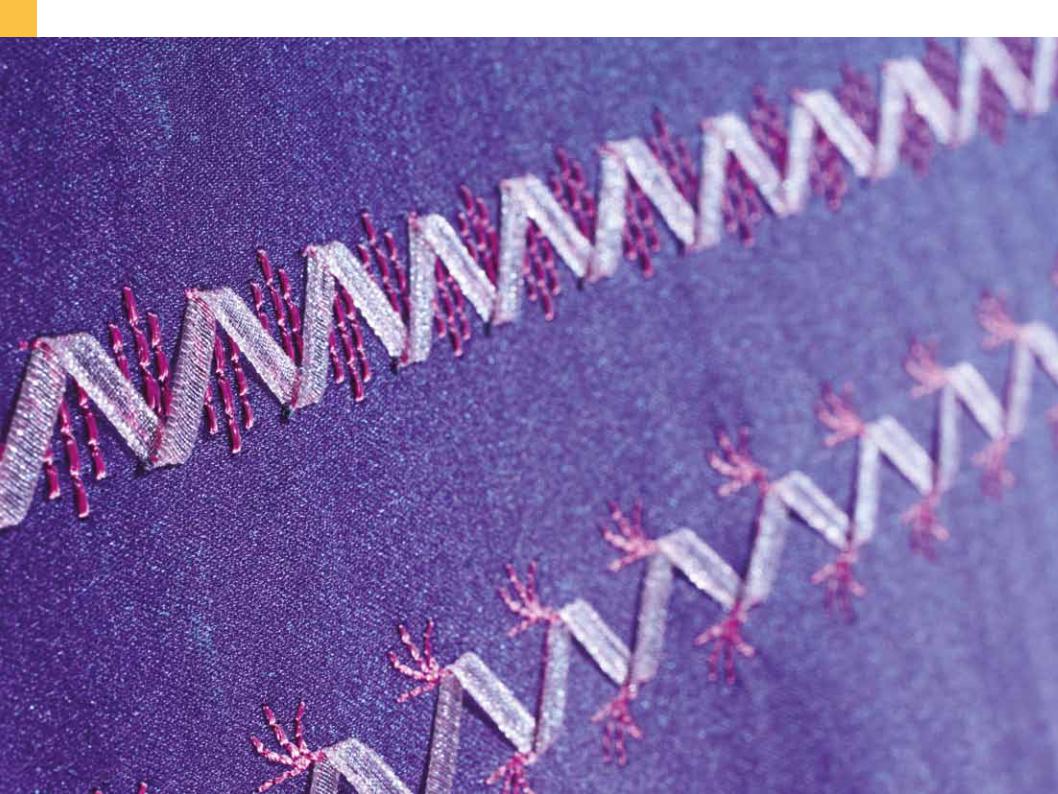
Introduction

2
Preparations

Preparations
Unpacking
1.Place the box on a steady, flat surface. Lift the machine out of the box and remove the outer packaging and lift off the machine carrying case.
2.Remove all other packing material and the plastic bag.
3.Slide off the accessory tray and remove the styrofoam inside.
Note: Styrofoam left in the accessory tray while sewing may affect stitch quality. The styrofoam is for packing purposes only and should be removed.
Note: Your creative™ 4.5 sewing and embroidery machine is adjusted to provide the best stitch result at normal room temperature. Extreme hot and cold temperatures can affect the sewn result.
Some fabrics have a lot of excess dye which can cause discoloration on other fabric but also on your sewing machine.
This discoloring may be very difficult or impossible to remove. Fleece and denim fabric, especially red and blue, often contain a lot of excess dye. If you suspect that your fabric/ready-to-wear garment contains a lot of excess dye, always pre-wash it before sewing to avoid the discoloring.
Connecting the foot control cord
Among the accessories you will find the foot control cord. Connecting the foot control cord to the foot control is only neccessary the very first time you are going to use the machine.
1. Take out the foot control cord. Turn the foot control over. Connect the cord to the socket inside the open space on the underside of the foot control as shown.
2. Push firmly to make sure it is properly connected.
3. Pull the cord into the slot to the left of the socket to ensure that the foot control will rest evenly on the floor.
Connect the power cord and foot control
Note: Before plugging in the foot control, check to ensure that it is type “FR5” (see underside of foot control).
1. Connect the foot control cord to the front socket on the bottom right side of the machine (A).
2.Connect the power cord to the rear socket on the bottom right side of the machine (B). Plug the
cord into a wall socket.
3.Press the ON/OFF switch to ON to turn on
power and light (C).
For the USA and Canada
This sewing machine has a polarized plug (one
blade wider than the other). To reduce the risk of electric shock, this plug is intended to fit in a
polarized outlet only one way. If the plug does not fit fully in the outlet, reverse the plug. If it still does not fit, contact a qualified electrician to
install the proper outlet. Do not modify the plug in any way.
C A B
2:2
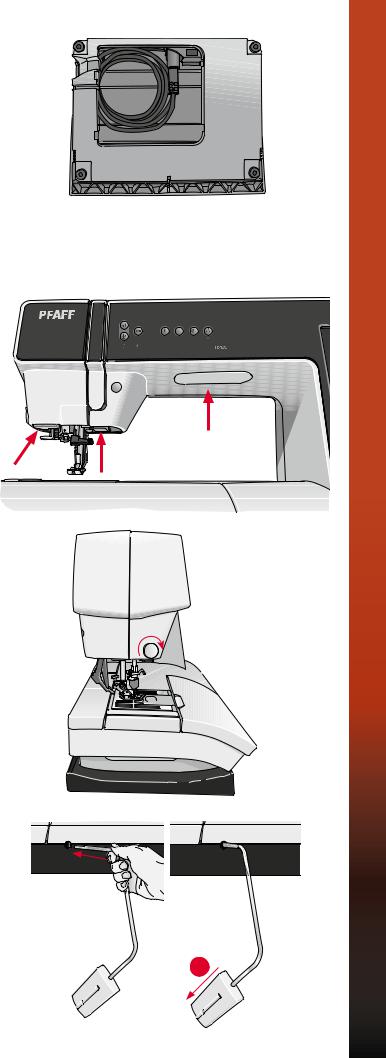
Pack away after sewing
1.Turn the main switch (C) off.
2.Unplug the cord from the wall socket and then from the machine (B).
3.Unplug the foot control cord from the machine
(A). Wind the foot control cord and place inside the open area on the underside of the foot control.
4.Place all accessories in the accessory tray. Slide the tray on to the machine around the free arm.
5.Place the foot control in the space above the free arm.
6.Put on the hard cover.
LED lights
Your machine has LED lights which distribute the light evenly over the sewing area and eliminates shadows.
Free arm
To use the free arm, slide off the accessory tray. When attached, a hook keeps the accessory tray locked to the machine. Remove the tray by sliding it to the left.
Thread cutter
To use the thread cutter, pull the thread from back to front as shown.
Electronic knee-lift
Your machine comes with an electronic knee-lift for regulating the presser foot height.
Insert the knee-lift in the provided hole on the machine. The flat side must face upwards. Adjust the rectangular bar on the knee-lift until it is positioned at a comfortable height for you (C).
If you press the knee-lift to the right, the presser foot will raise. You can now guide the fabric with both hands.
To remove the knee-lift, just pull it straight out of the hole.
C 
2:3
Preparations
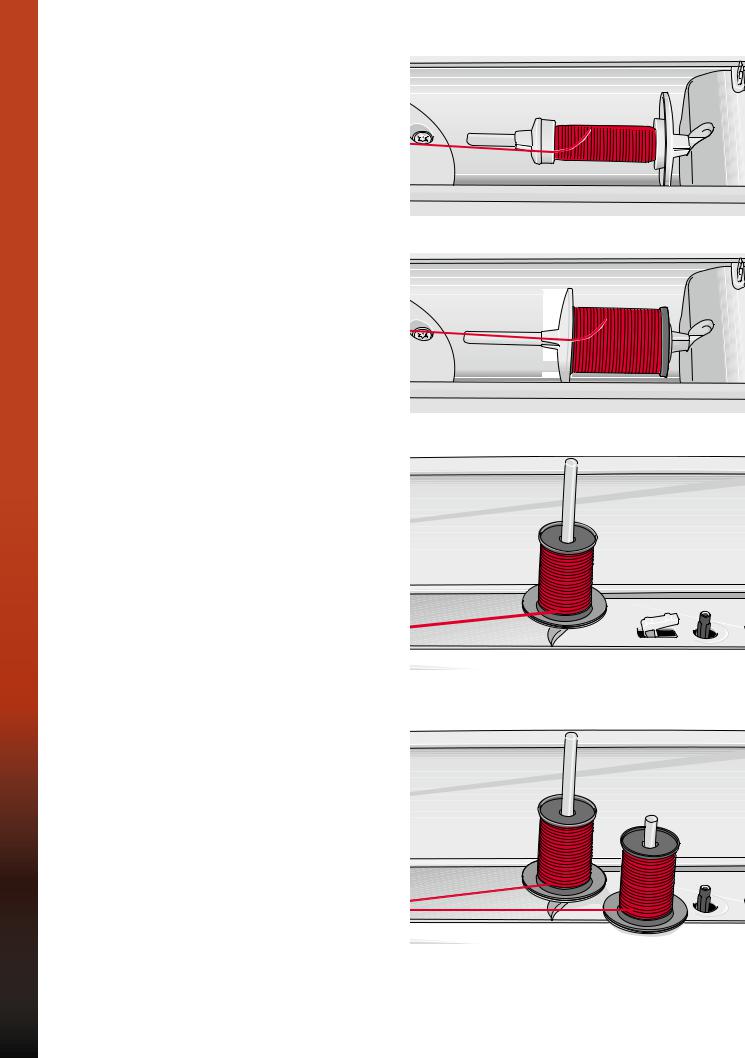
Spool pins
Your machine has two spool pins, a main spool pin and an auxiliary spool pin. The spool pins are designed for all types of thread. The main spool pin is adjustable and can be used both in a horizontal position (the thread reels off the spool) and a vertical position (the thread spool rotates).
Use the horizontal position for normal threads and the vertical position for large spools or specialty threads.
Horizontal position
Place a spool cap and the thread spool on the spool pin. Make sure that the thread reels off the spool counter clock-wise and slide on a second spool cap.
Note: Not all thread spools are manufactured in the same way. If you experience problems with the thread, turn it in the opposite way or use the vertical position.
Use a spool cap slightly larger than the thread spool. For narrow thread spools, use a smaller spool cap in front of the spool. For large thread spools, use a larger spool cap in front of the spool.
The flat side of the spool cap should be pressed firmly against the spool. There should be no space between the spool cap and the thread spool.
Vertical position
Raise the spool pin to the vertical position. Slide on the large spool cap and place a felt pad under the thread spool. This is to prevent the thread from reeling off too fast.
Do not place a spool cap on top of the spool pin as that would prevent the spool from rotating.
Small spool cap
Large spool cap
Main spool pin in vertical position
Auxiliary spool pin
The auxiliary spool pin is used when winding a bobbin thread from a second spool of thread or for a second spool when sewing with a twin needle.
Raise the auxiliary spool pin. Slide on a large spool cap and place a felt pad under the thread spool.
Preparations
2:4
Auxiliary spool pin and main spool pin in vertical position.
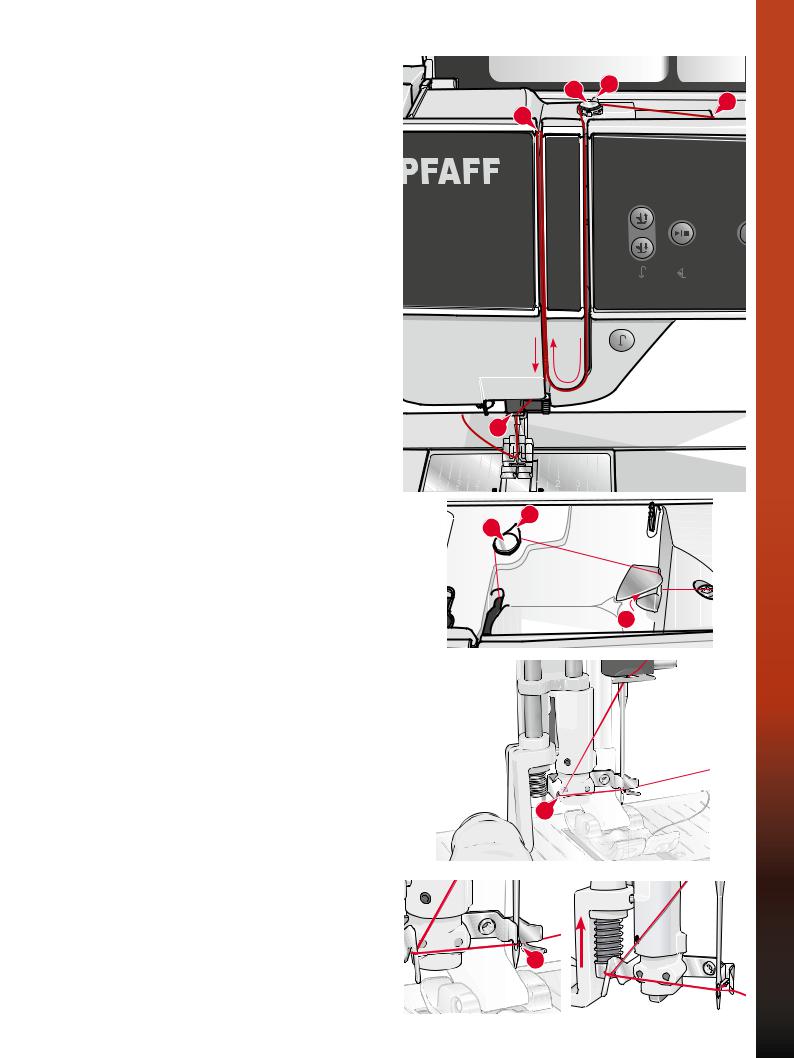
Threading the machine
Make sure that the presser foot is raised and the needle is in the up position.
1.Place the thread on the spool pin and fit a spool cap of the right size.
Note: Hold thread with both hands to prevent it from slacking while threading. This ensures that the thread will be positioned properly in the threading path.
2.Pull the thread into the thread guide by pulling it from the front to the back (A). Make sure the thread clicks into place. Then pull the thread underneath the bobbin winder thread guide (B) on the pre-tension disc (C).
3.Thread down through the right-hand threading slot and then upwards through the left-hand threading slot.
4.Bring the thread from the right into the take-up lever (D) and down in the left-hand threading slot to the needle thread guide (E).
5.Thread the needle.
Needle threader
The needle threader allows you to thread the needle automatically. The needle must be in the up position to use the built-in needle threader. We also recommend lowering the presser foot.
1.Use the handle to pull the needle threader all the way down. The threader hook (G) swivels through the needle eye.
2.Place the thread from the back over the hook (F) and under the thread hook (G).
3.Let the needle threader gently swing back. The hook pulls the thread through the needle eye and forms a loop behind the needle. Pull the thread loop out behind the needle.
Note: The needle threader is designed to be used for size 70-120 needles. You cannot use the needle threader for size 60 needles or smaller, the wing needle, twin needle or triple needle. There are also some optional accessories that require manual threading of the needle.
When threading the needle manually make sure that the needle is threaded from front to back. The bobbin cover can be used as a magnifying glass.
C |
B |
|
A |
||
|
D
E
B
C














 A
A


 F
F


G |
2:5
Preparations
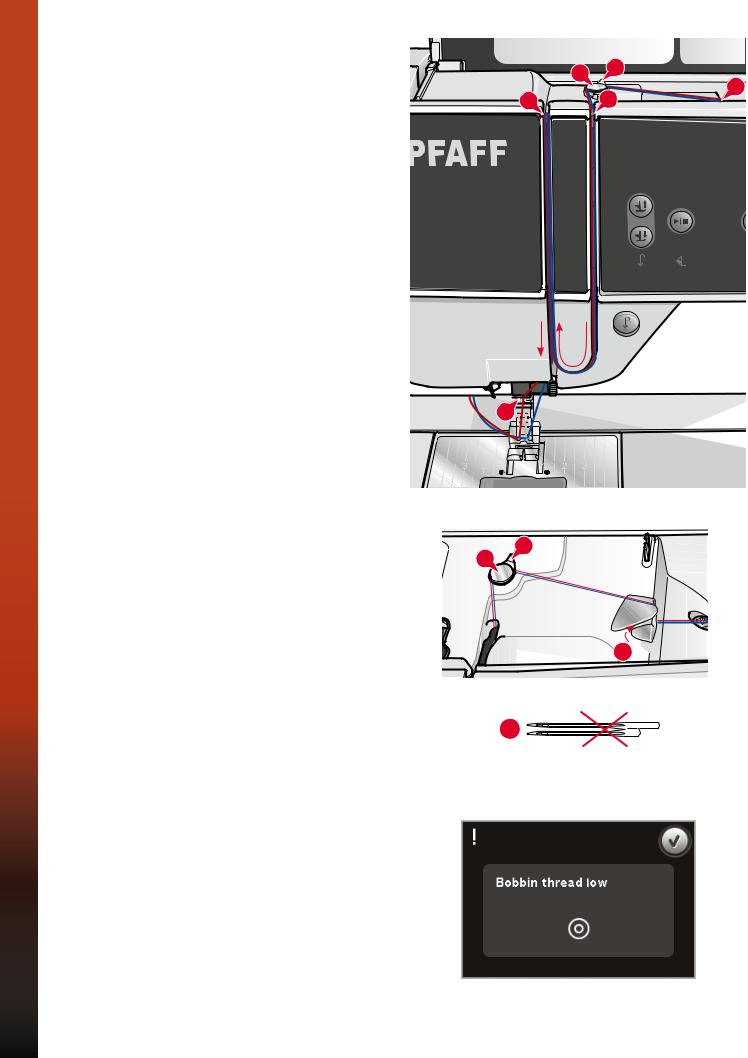
Preparations
Threading for twin needle
Replace the sewing needle with a twin needle. Make sure that the presser foot is raised and the needle is in the up position.
1.Place the thread on the spool pin and fit a spool cap of the right size. Raise the auxiliary spool pin. Slide on a large spool cap and a felt pad. Place the second thread on the spool pin.
Note: Hold threads with both hands to prevent them from slacking while threading. This ensures that the threads will be positioned properly in the threading path.
2.Pull the threads into the thread guide by pulling them from the front to the back (A). Make
sure the threads click into place. Then pull the threads underneath the bobbin winder thread guide (B) on the pre-tension disc (C).
3.Thread down through the right-hand threading slot and then upwards through the left-hand threading slot. Make sure that you pass one thread to the left and one thread to the right sides of the tension disk (F).
4.Bring the threads from the right into the take-up lever (D) and down in the left-hand threading slot. Make sure that one thread is inside the needle thread guide (E) and the other one outside. Make sure that the threads do not become twisted together.
5.Thread the needles.
Note: Activate twin needle and select the correct twin needle width in Settings menu. This will limit the width of all stitches for that needle size to prevent damage to presser foot and needle.
Note: The weight and irregular surface of specialty threads such as metallic increases the amount of friction on the thread. By reducing the tension, the risk of needle breakage is prevented.
Note: Do not use asymmetrical twin needles (G), since it may damage your sewing machine.
Thread sensor
If the needle thread breaks or bobbin thread is running low, the machine stops and a pop-up appears on the screen. If needle thread breaks:
Re-thread the machine and touch OK in the pop-up. If bobbin thread is running low: You can continue sewing without closing the pop-up before the bobbin thread runs out completly. This gives you an opportunity to plan where to stop sewing and change the bobbin. When the bobbin is replaced with a full one, touch OK in the pop-up.
2:6
|
C |
B |
|
A |
|
|
|
|
D |
|
F |
E 


B
C










 A
A
G
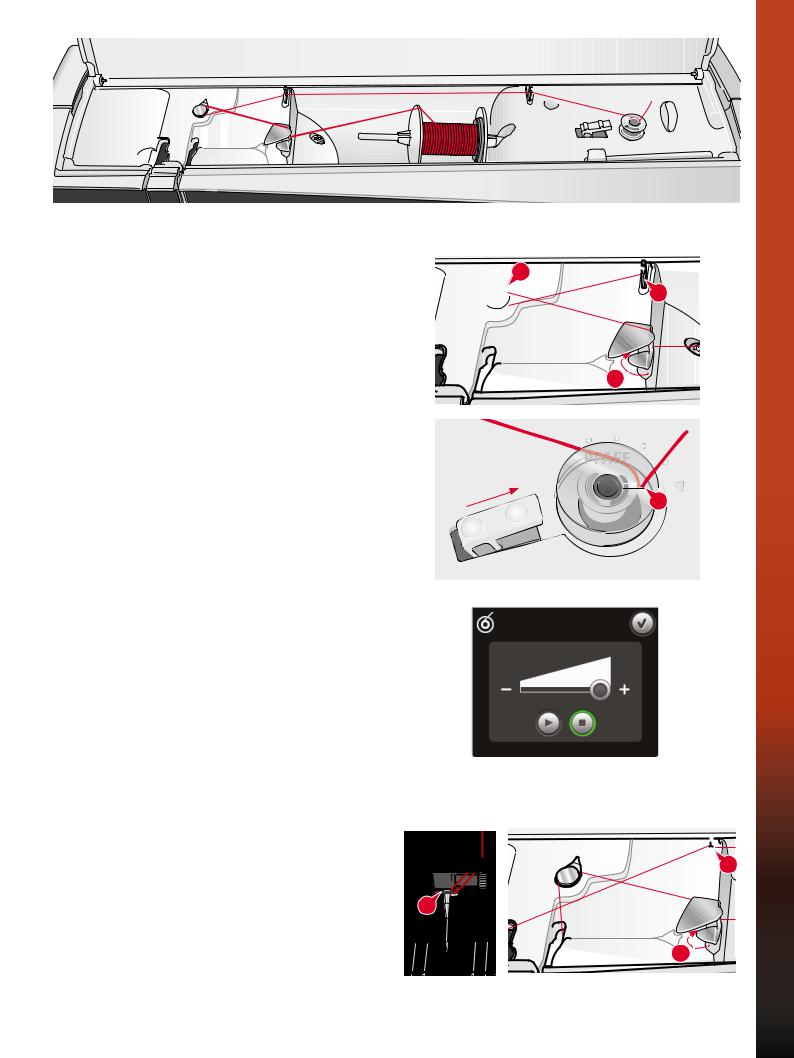
Bobbin winding
Winding from horizontal position
1.Place an empty bobbin on the bobbin spindle, with the logo facing up. Use only the original PFAFF® bobbins approved for this model.
2.Place the thread spool on the spool pin in horizontal position. Slide a spool cap tightly against the spool.
B 

 C
C
















 A
A
3.Place the thread into the thread guide (A) from
front to back. Pull the thread counter-clockwise |
|
|
above the bobbin winder thread guide (B) and |
|
|
then through the bobbin thread guides (C) at |
|
|
the rear. |
D |
|
Note: Make sure the thread is pulled securely inside |
||
|
||
the pre-tension device for correct thread tension. |
|
4. Thread through the slot in the bobbin (D) from the inside to the outside.
5.Push the bobbin winder lever towards the bobbin to wind. A pop-up appears on the screen. To adjust winding speed, use the slider in the pop-up. Stop and start bobbin winding with the icons in the pop-up. Hold the end of the thread firmly when starting to wind.
When the bobbin is full, the bobbin winder lever will switch back and the winding will stop automatically. The pop-up closes. Remove the bobbin and cut the thread using the bobbin thread cutter. Cut the free thread end close to the bobbin.
Winding while threaded |
|
Make sure that the presser foot and the needle |
|
are in the up position. To prevent the needle from |
|
bending, pull the thread out of the needle. |
E |
Bring the thread up from the needle thread guide (E), upward through the left-hand threading slot and through the bobbin thread guides (C). Then follow step 4 and 5 above.
 C
C
















 A
A
2:7
Preparations
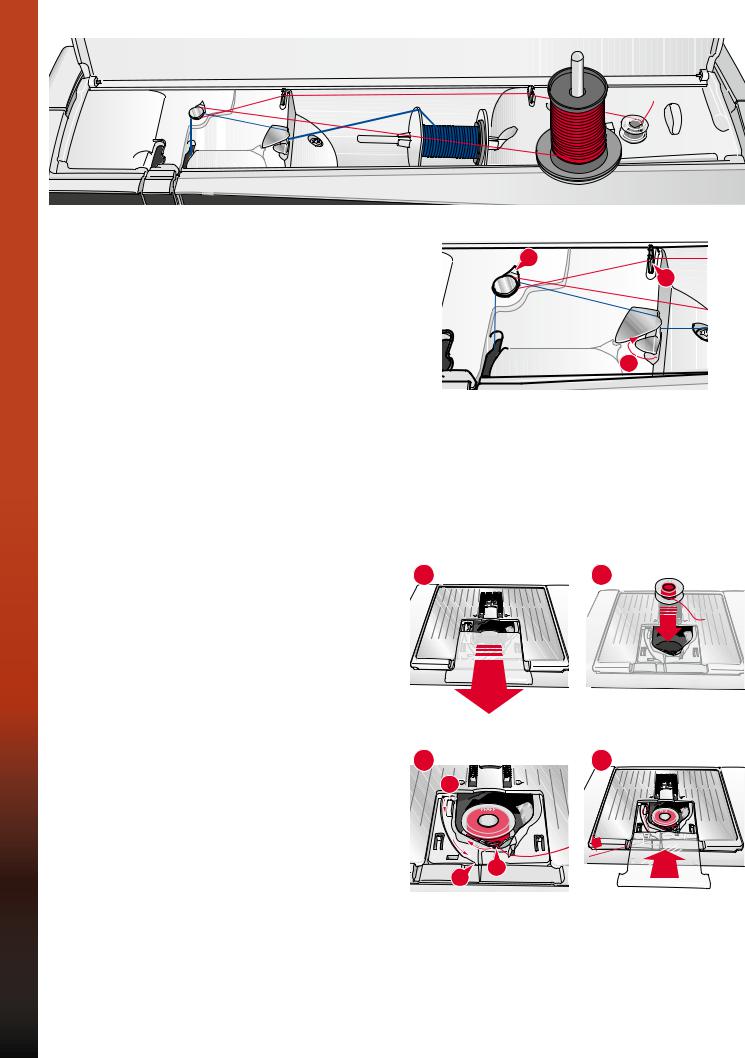
Winding while embroidering or sewing
Swing the auxiliary spool pin up. Place an appropriate spool cap, felt pad and thread spool on the spool pin.
The needle thread (blue) is placed into the thread guide (A) and underneath the bobbin winder thread guide (B). Pull the bobbin thread (red) counterclockwise above the bobbin winder thread guide
(B) and through the bobbin thread guides (C). Then follow step 4 and 5 on the previous page.
B |
C |
A |
Inserting the bobbin
1.Remove the bobbin cover by sliding it towards you.
2.Place the bobbin in the bobbin case with the logotype facing up and the thread unreeling from the left of the bobbin. The bobbin will then rotate counter-clockwise when you pull out the thread.
3.Place your finger on the bobbin to keep it from turning as you pull the thread firmly to the right and then to the left into the tension spring
(A) until it “clicks” into place.
4.Continue threading around (B) and to the right of the thread cutter (C). Replace the cover. Pull the thread to the left to cut.
|
1 |
2 |
|
|
|
|
|
|
|
|
|
|
|
|
|
|
|
|
|
|
|
|
|
|
|
|
|
|
|
|
|
|
|
|
|
|
|
|
|
|
|
|
|
|
|
|
|
|
|
3 |
4 |
|
B |
C A
Preparations
2:8
